Day-O: How Beetlejuice conquered its strangeness to become a cult classic
Multiple rewrites, hesitant actors and mixed reviews – Jacob Stolworthy on how Tim Burton’s hilarious spin on the haunted house film almost never happened, as a long-awaited sequel is finally released

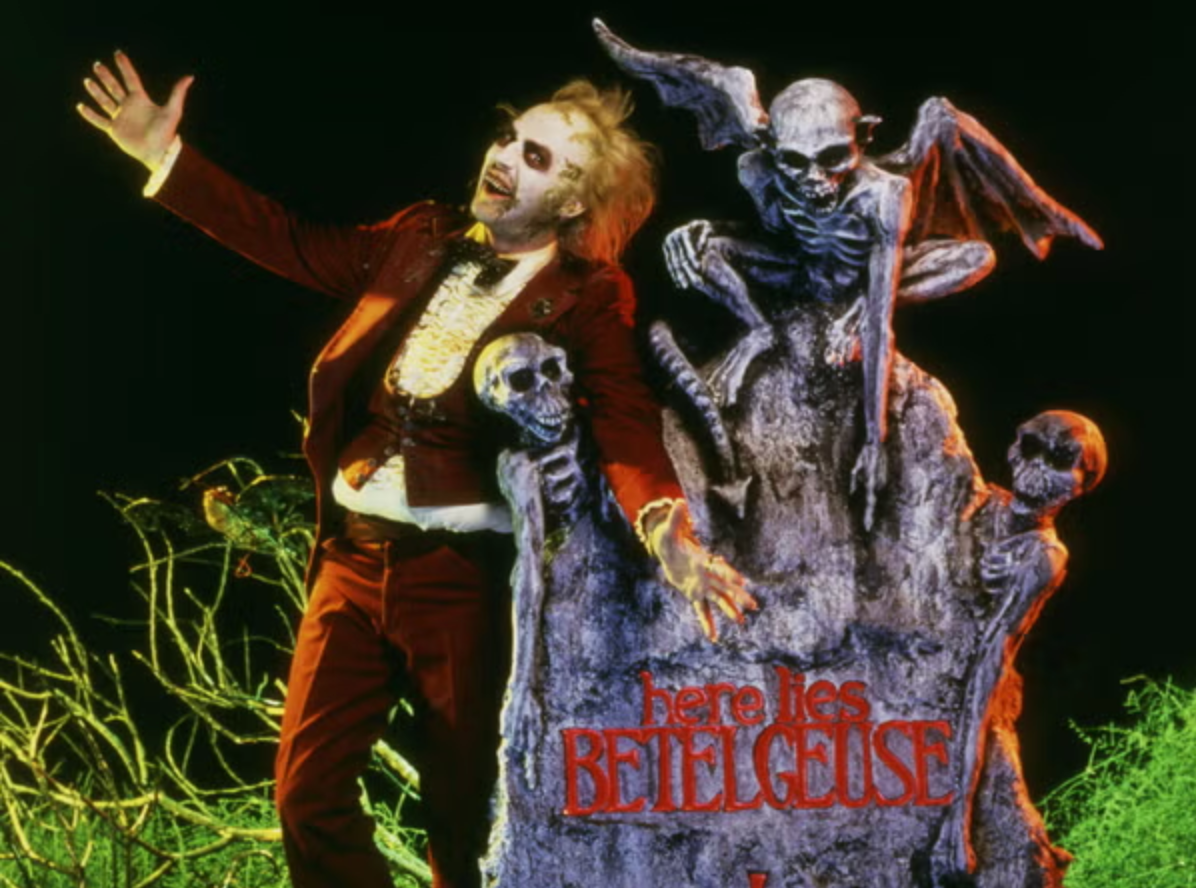
Universal Studios, 1986. A screenplay is slammed on the table in front of producer Larry Wilson. “What on Earth are you doing with your career?” an exec shouts at him. Three days earlier, Wilson had met with the same man, confident that the bustling script under his arm – a horror-comedy hybrid titled Beetlejuice – would pique his interest. Quite the opposite.
“This piece of weirdness, this is what you’re going out into the world with?” the exec continued. “You’re developing into a very good executive. You’ve got great taste in material. Why are you going to squander all that for this piece of s***?” Shortly after that, Wilson recalls, “we sold it to the Geffen Company”.
Beetlejuice’s history is well documented. Released 36 years ago, the film made over $73m from a modest $13m, and sat among 1988’s highest grossing films, alongside Rain Main and Big. It launched the careers of Tim Burton and Winona Ryder, won an Oscar (for makeup) and is still celebrated by its many fans, who regularly attend screenings dressed as its title character (spelt “Betelgeuse” in the film). It even inspired its own cartoon series, action figure range, a musical adaptation on Broadway and now – after all these years – a legacy sequel, which is in cinemas now.
The film tells the story of recently deceased couple, Adam and Barbara Maitland (Alec Baldwin and Geena Davis), who, after struggling to haunt their own home, summon the services of a havoc-wreaking ghost to scare off its new residents, the Deetzes (Catherine O’Hara, Jeffrey Jones, Ryder).
If its plot seems straightforward, the scriptwriting process was anything but. After multiple rewrites and continuous studio rejection, it seemed Beetlejuice was destined to rot away in development hell.
Indeed, the first draft – from Michael McDowell – was rather different to the one Burton would go on to adapt; the emphasis was firmly on horror. To begin with, the character of Betelgeuse was written as a malevolent demon, who, instead of just spooking the Deetz clan, would try to murder them in cold blood. The beloved dinner dancing scene, memorably played out to the strains of Harry Belafonte song “Day-O”, saw the family tied to their chairs by carpeted vines, while even the Maitlands’ death scene – presented in the finished film with a dash of comedy – was originally conceived as violent and unsettling. The project seemed more David Cronenberg than Tim Burton.
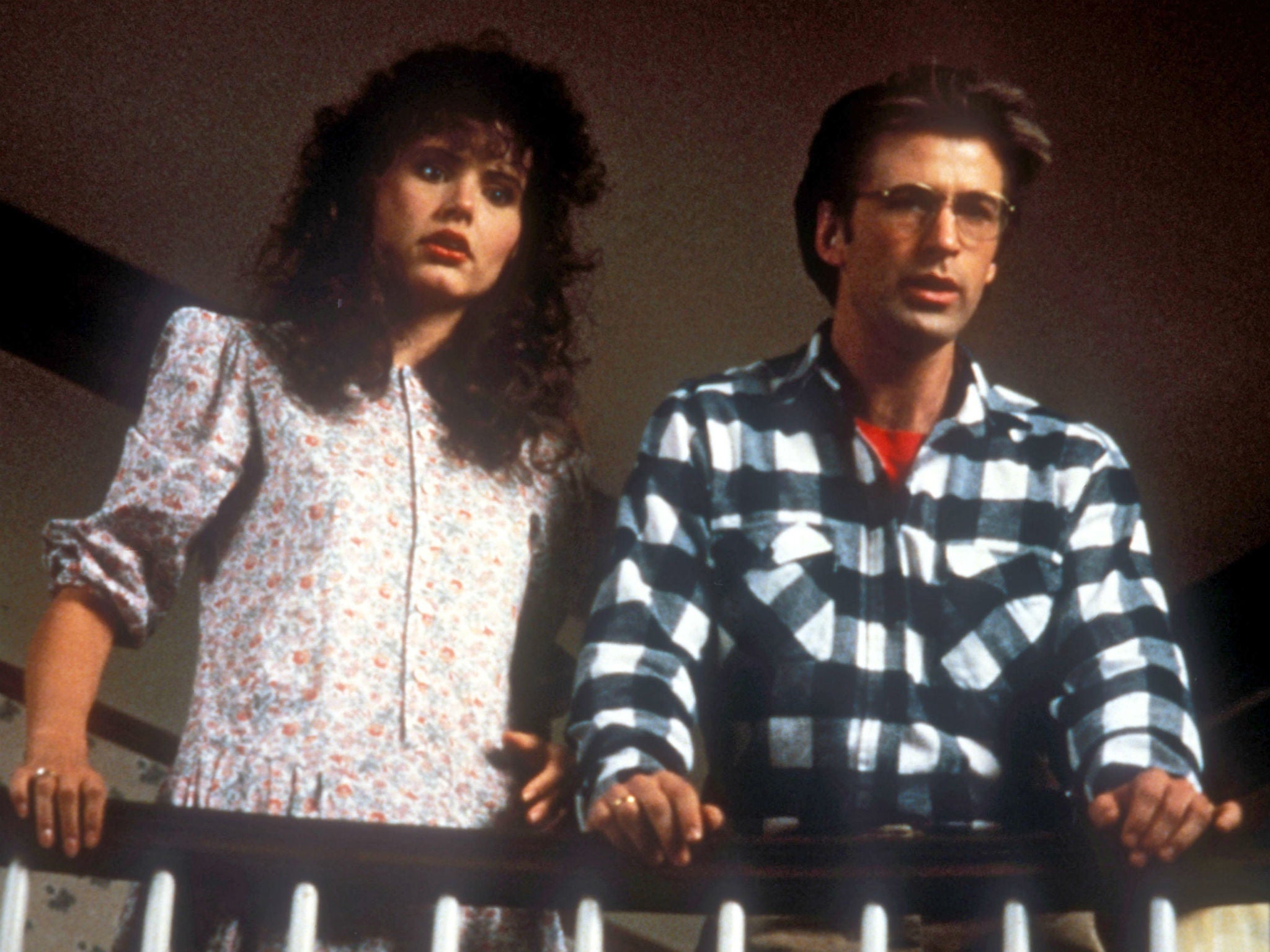
It was “script doctor” Walter Skaaren’s rewrite that ensured a lightness was added to the finished film (he had saved Tony Scott’s Top Gun from disaster a couple of years previously). But McDowell’s initial screenplay was irreverent enough for Burton to take the bait. Two years had passed since his debut Pee-Wee’s Big Adventure (1986) and the director was growing frustrated by the lack of interesting scripts coming his way.
“I was being offered any bad comedy,” he recalls. “It was a case of, you do a bad comedy, you get offered all the bad comedies.”
The director found himself increasingly hounded by studio bosses to pick something more in line with Hollywood convention – but Burton was yearning for something more unique. Beetlejuice’s amorphous form attracted him like a moth to the flame.

Watch Apple TV+ free for 7 day
New subscribers only. £9.99/mo. after free trial. Plan auto-renews until cancelled.
ADVERTISEMENT. If you sign up to this service we will earn commission. This revenue helps to fund journalism across The Independent.

Watch Apple TV+ free for 7 day
New subscribers only. £9.99/mo. after free trial. Plan auto-renews until cancelled.
ADVERTISEMENT. If you sign up to this service we will earn commission. This revenue helps to fund journalism across The Independent.
“The script for Beetlejuice was completely anti all that: it had no real story, it didn’t make any sense, it was more like a stream of consciousness,” he says.
One particular thing that stood out to Burton was how its tone appeared to, in his opinion, reflect everyday living. “[In life], there’s nothing that’s just funny, just dramatic or just scary,” he would say. “It’s all mixed together.”
And still, the rewrites continued.
“For a lot of the time on Beetlejuice, I felt like I was in court giving depositions,” Burton recalls. “I remember having script meetings that lasted for like 24 hours over the course of two days. By the end of it, we were questioning every element.”
According to McDowell, the finished screenplay was the ultimate paradox: “A feel-good movie about death.” And with the writing out the way, Burton had another task on his hands: convincing actors to appear in the thing.
I was being offered any bad comedy. It was a case of, you do a bad comedy, you get offered all the bad comedies
“The only person who initially really wanted to do it was Geena Davis,” he says, revealing that Catherine O’Hara and Winona Ryder were harder to sign up. The film’s success, however, rested in finding the right person to play its title character – and Burton faced an immediate obstacle when his initial choice was vetoed by the studio: singer Sammy Davis Jr.
It was executive David Geffen who presented Burton with the idea of Keaton. The actor, then 35, had starring roles in commercial flops Mr Mom (1983), Johnny Dangerously (1984) and Gung Ho (1986) – all films that had evaded Burton’s radar. One meeting later, however, and the director was convinced Keaton was the man for the job.
“Michael is manic, a livewire and he’s got these great eyes,” Burton would say, comparing the actor to Lon Chaney and Boris Karloff. Keaton, hoping to spend more time at home, initially turned down the role (“I didn’t quite get it and I wasn’t looking to work”). Thankfully, his self-confessed “laziness” subsided and he accepted Burton’s offer. It would prove to be his starmaker.
Keaton’s casting breathed new life into the script thanks to his willingness to improvise. Consider his rip-roaring introduction scene: as the self-named “Ghost with the Most” hilariously collides with the strait-laced Maitlands, it’s hard to know what Keaton is reciting and what he’s coming up with on the spot. It remains one of the film’s most entertainingly quotable scenes, thanks to its hilarious references to Juilliard and William Friedkin’s horror classic The Exorcist (1973).
“A lot of the stuff in the film was improvised,” says Burton. “I [would go over to] Michael’s house and the two of us would come up with jokes. It was really fun because we were essentially creating a character.”
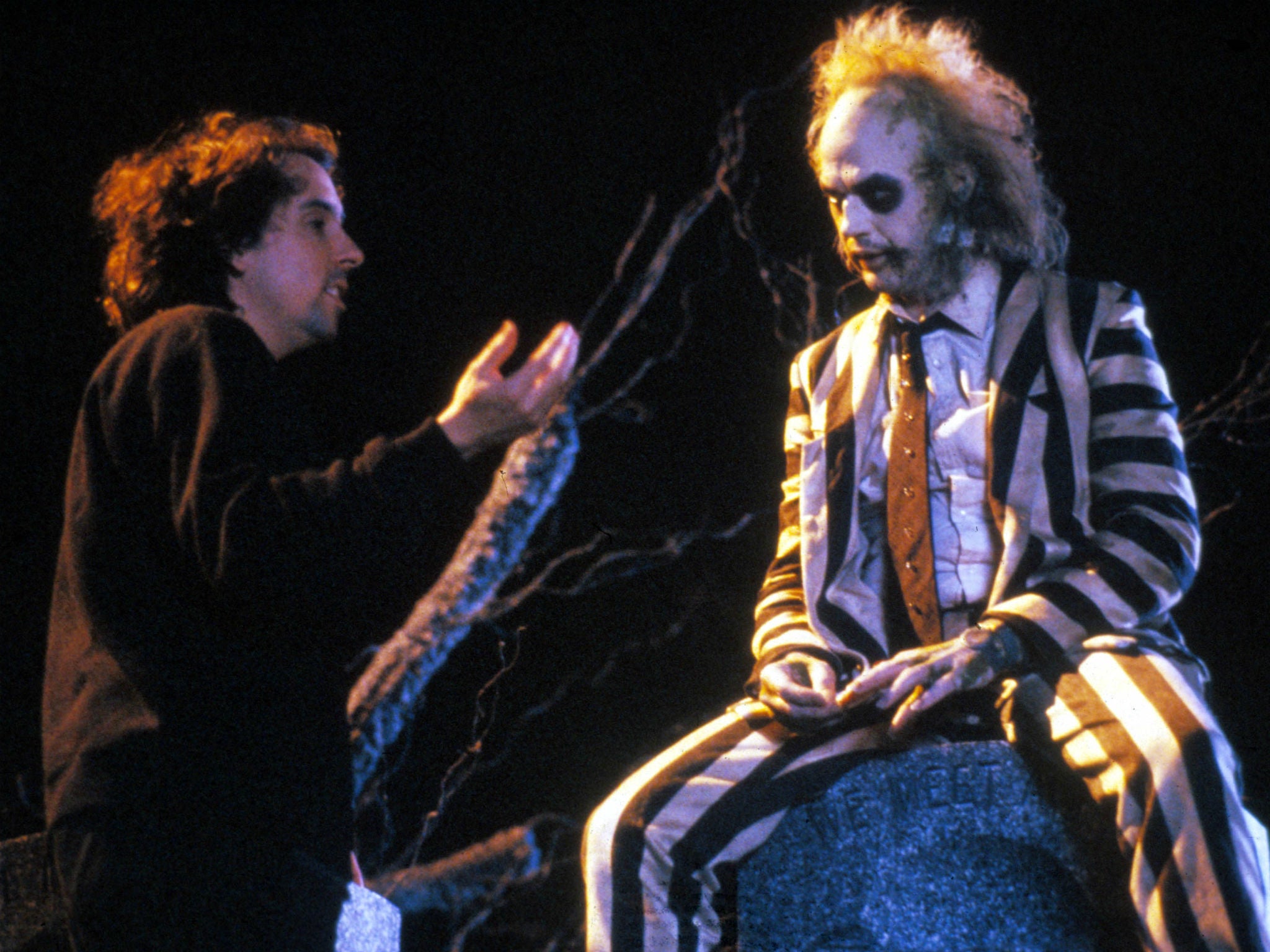
Beetlejuice takes the subject of death and turns it on its head, presenting not only an alternative version of the haunted house film, but also the afterlife. In the film, it’s presented as… well, not too dissimilar from reality. Just far dustier.
“[Production designer] Bo Welch wanted it to be specific enough to invoke fear that the afterlife might not be much different than real life,” Burton states. Welch was the one responsible for transforming the Maitlands’ creaky old rural house into Deetz matriarch Delia’s nouveau riche nightmare. He brought the sets to life across two soundstages – one in Los Angeles, the other in East Corinth, Vermont (Welch’s Beetlejuice experience, in particular, would run deep: in 1993 he married O’Hara, and was reunited with Baldwin on his directorial debut The Cat in the Hat, starring Mike Myers, in 2004).
The movie’s view is that when you die, your problems aren’t taken care of
Burton’s aim with Beetlejuice was to poke fun at death, a notion that the film milks in ingenious ways. Rewatch the scene in which a befuddled Adam and Barbara – after consulting their “Handbook for the Recently Deceased” – travel to a netherworld to find out what the hell they’re meant to do now they’re dead. Upon arrival, they discover a ticketed reception filled with a roomful of dead people waiting for appointments with their designated caseworkers. It’s not dissimilar from the Post Office on a Saturday morning.
“The movie’s view is that when you die, your problems aren’t taken care of,” Burton says. “We tried to portray the afterlife as a cheap science fiction movie; not as clouds in a beautiful sky but an IRS office.”
It was finding a way to get the couple out of the house and into this netherworld that proved the biggest obstacle for the writers.
“We just couldn’t figure it out,” Wilson tells The Independent. “I kept coming up with more convoluted ways they could escape the house, and Michael would just sit there and say, ‘No. No. No.’ I finally got really mad and said, ‘Well, what do you want them to do? Draw an effing door?!’ We just started laughing because it was absolutely perfect.”
These scenes went down particularly well with audiences at test screenings – though only after the film’s score, composed by Burton’s regular collaborator Danny Elfman, had been added. Before that, the feedback had not been good, the consensus being that Beetlejuice was just too strange.
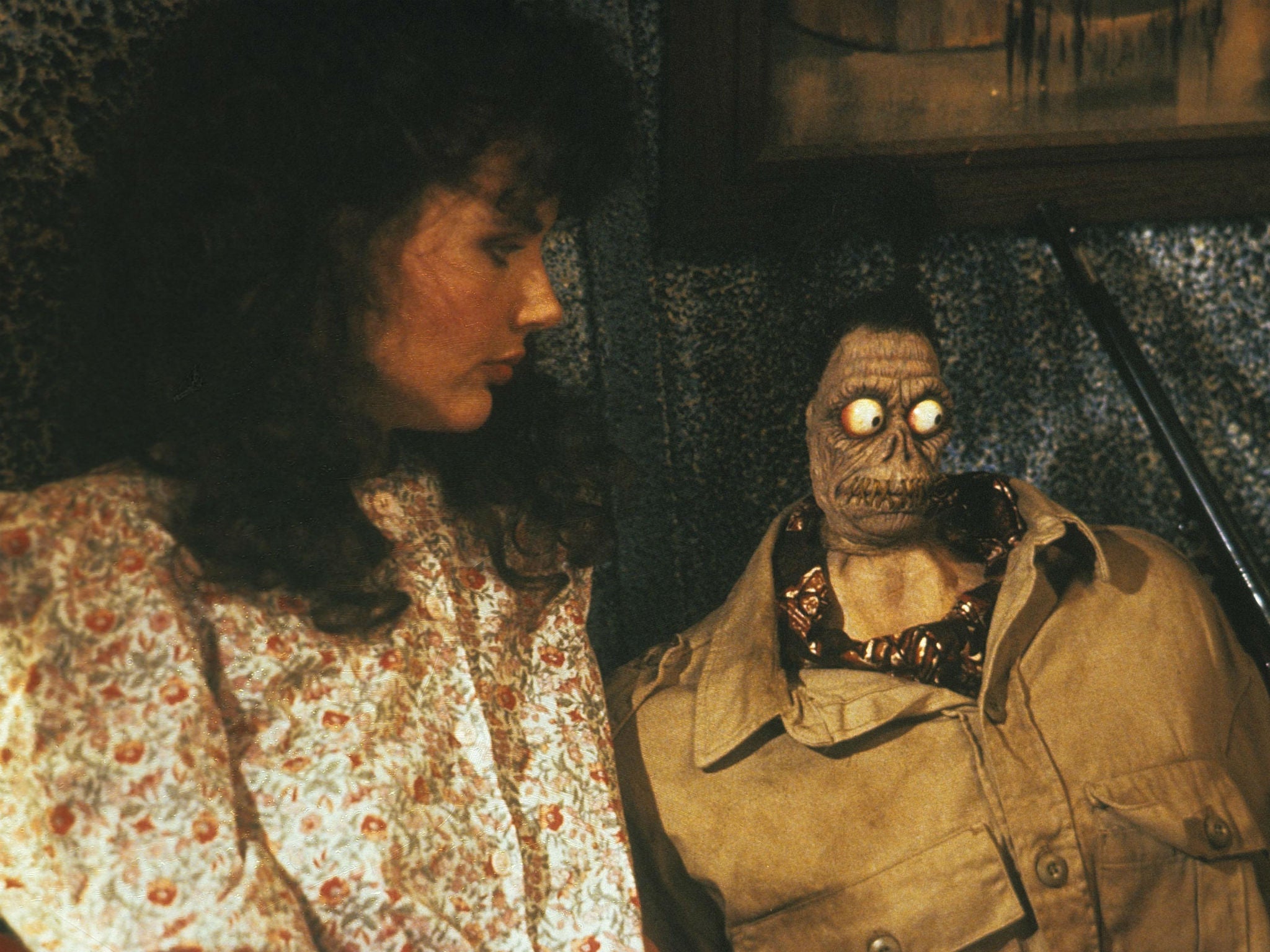
Considering it’s named after him, Betelgeuse doesn’t actually appear in much of the film: it’s three-quarters of an hour before he’s introduced, while Keaton’s overall screen time is only 18 minutes in total. This less is more approach is one of the reasons why Wilson believes the film has endured as a success.
Wilson previously said he was “nervous” about a follow-up as “the assumption would be, well if we only got 20 minutes of him in the first one, let’s give the audience a full hour in the sequel”, which he said “would kill it dead”. Alfred Gough and Miles Millar, the Wednesday scribes who wrote the new sequel Beetlejuice Beetlejuice heeded the warning of Wilson, who has returned as executive producer; Keaton’s screen time only slightly exceeds his appearance in the original.
Keaton himself ranks the character as one of his all time favourites. In 2016, he told The Independent that it’s the only role he’s ever desired to return to. Reflecting on the role, he described playing the character as “rage and purge” acting, relishing the chance to evolve him from something evil into a comic force.
To bring this screwball spirit to life, the actor – who would go on to work with Burton on Batman (1989) and Batman Returns (1992) – created a goofy voice and had the film’s wardrobe department send in a bursting rack of clothes ranging from different centuries. After spending hours trying on new items in front of the mirror, he eventually came up with the iconic black-and-white suit worn in the film’s climactic sequence, deciding he’d have hair that stood out like he was “wired and plugged in”. And so, Betelgeuse was born.
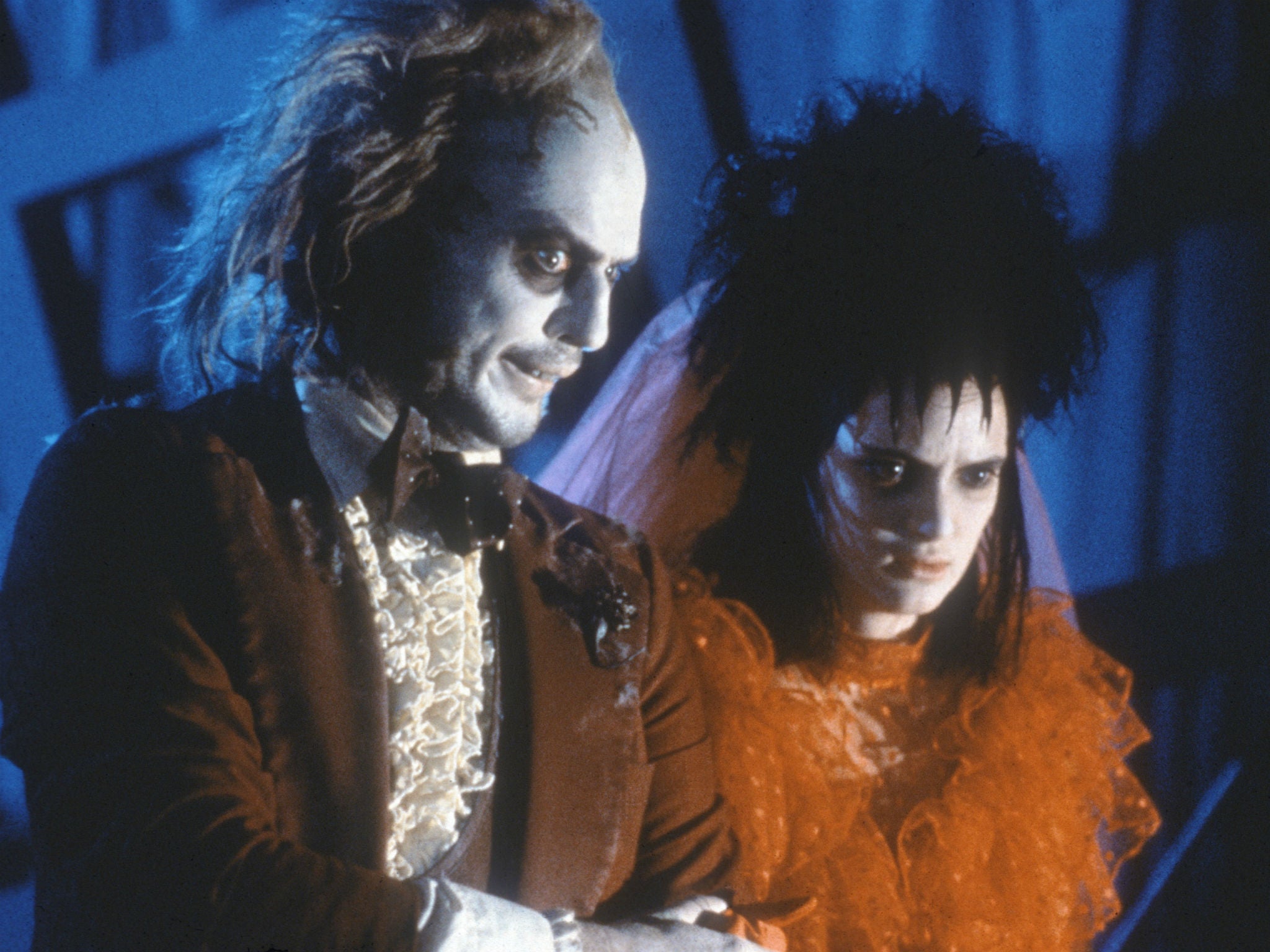
Every decade, there are several films whose sleeper-hit success surprises the world. Beetlejuice is a shining example of this – rare proof that too many cooks might not spoil the broth, after all. While the odds were stacked against a film that, on paper, failed to scream box office triumph, somehow it’s become the bona fide classic it is today. They were lucky in some respects. Take the music, for example. Songs by Belafonte – “Day-O” and “Jump in the Line (Shake, Señora)” – were only added by Burton late on due to the script’s original Motown choices being too expensive. Beetlejuice simply wouldn’t be the same without them.
Critical reaction to the film was largely mixed – but it did have its champions. The New Yorker’s Pauline Kael, acknowledging its arduous journey to screen, wrote: “The best of WC Fields was often half gummed up, and that doesn’t seem to matter 55 years later. With crazy comedy, you settle for the spurts of inspiration, and Beetlejuice has them enough to make this spotty, dissonant movie a comedy classic.” Meanwhile, Kevin Jackson, reviewing in The Independent, said it was “often more spectacular than funny”.

Although Alec Baldwin was more critical of Beetlejuice (“I don’t think he saw it for what it was,” Burton would later say), Keaton remains unwavering in his support of the film, and believes he knows the reason behind its unlikely alchemy. “From an art perspective, I don’t know how you get better than Beetlejuice,” he says. “If you consider the process of taking something from someone’s mind and putting it on the screen, I think that movie is incomparable. When things are like that, they’ll just last forever.”
Beetlejuice has been re-released in cinemas across the country and is available on Blu-ray and DVD with a brand new, collectable and numbered sleeve, as part of the Warner Bros Iconic Moments collection
Join our commenting forum
Join thought-provoking conversations, follow other Independent readers and see their replies
Comments